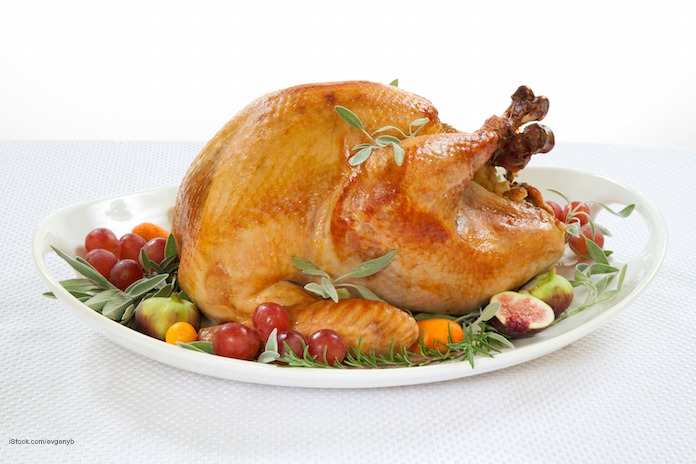Many holiday meals, especially those served to large groups, can be risky because of a bacteria called Clostridium perfringens. This bacteria causes almost 1 million cases of food poisoning every year in the United States. And these illnesses are preventable. Foodsafety.gov has information on how to prevent these outbreaks.

The problem occurs when large quantities of food are cooled and reheated, or held for long periods of time on warming trays or containers. Parts of these foods may drop into the danger zone of 40°F to 140°F for some period of time, and that’s when pathogenic bacteria can grow.
Clostridium perfringens bacteria are commonly found in meat and poultry. When big pots of stew or gravy are not kept properly hot or cold, the bacteria multiply.
These types of outbreaks usually happen in restaurants, hospitals, school cafeterias, or prisons, or events that are catered. In fact, last year at about this time there were two outbreaks of C. perfringens: one was at the Antioch American Legion Thanksgiving dinner in Contra Costa County, California. Twenty-five people were sickened in that outbreak. Three people who were sickened died. The other outbreak that sickened almost 300 people occurred at Golden Ponds restaurant in Greece, New York on Thanksgiving day. In both of those 2016 outbreaks, large quantities of food were prepared and reheated.
The symptoms of Clostridium perfringens food poisoning occur quickly, within 24 hours of exposure. Most people develop diarrhea and abdominal cramps. This infection cannot be passed person-to-person. Most people do recover completely, but some develop dehydration and must be hospitalized.
To prevent this type of infection, food must be cooled quickly and properly, and reheated and held at safe temperatures. Products made with beef or poultry are especially vulnerable. Leftover foods should be refrigerated promptly, and large pots of food should be divided into small quantities before they are refrigerated. The center areas of these foods can stay in the danger zone longer. And all leftovers must be reheated to at least 165°F before they are served.
It’s important that anyone who cooks or serves food to large groups be aware of this risk. Food handlers must be educated about safely cooling, reheating, and holding food at safe temperatures.




